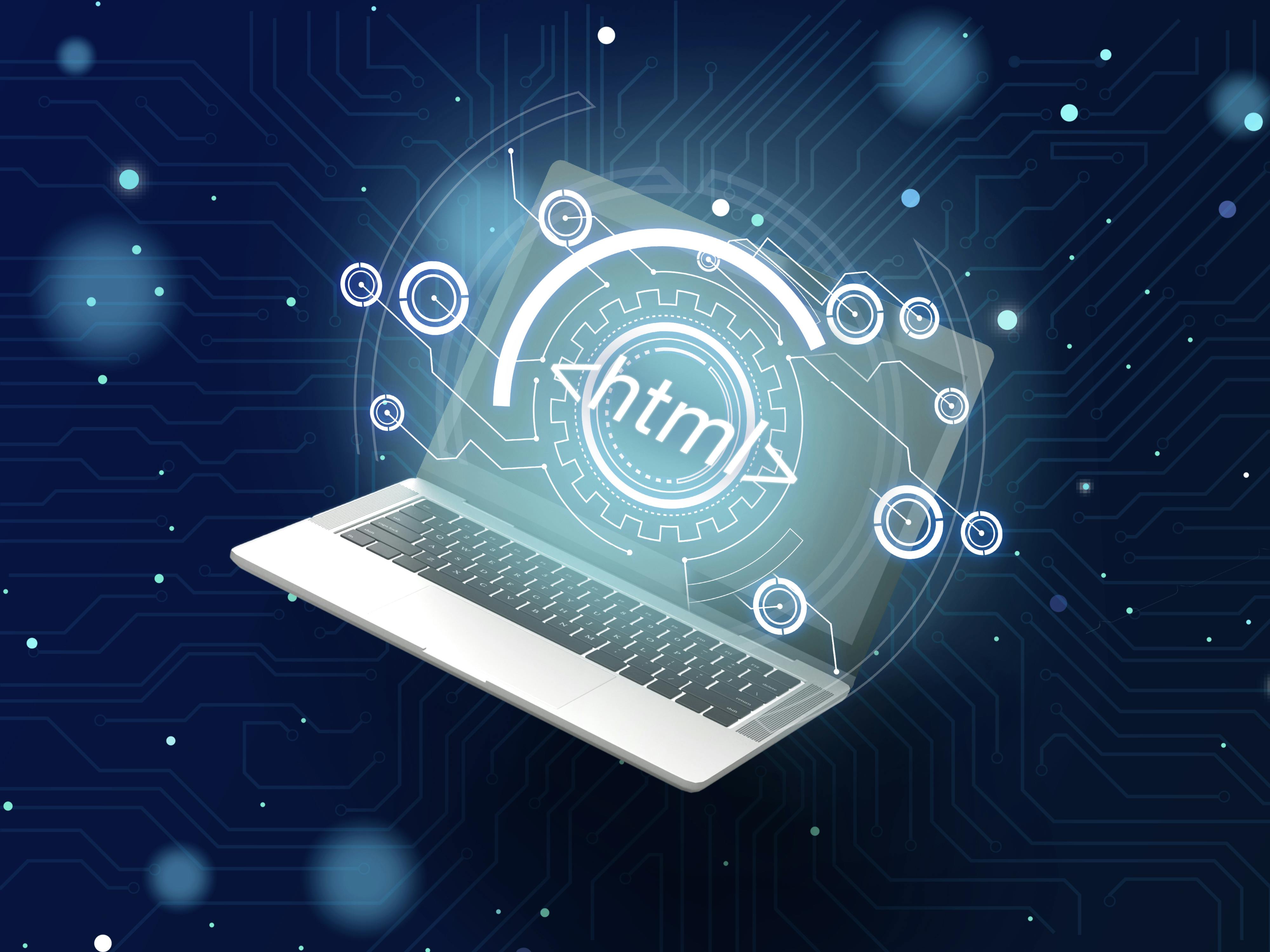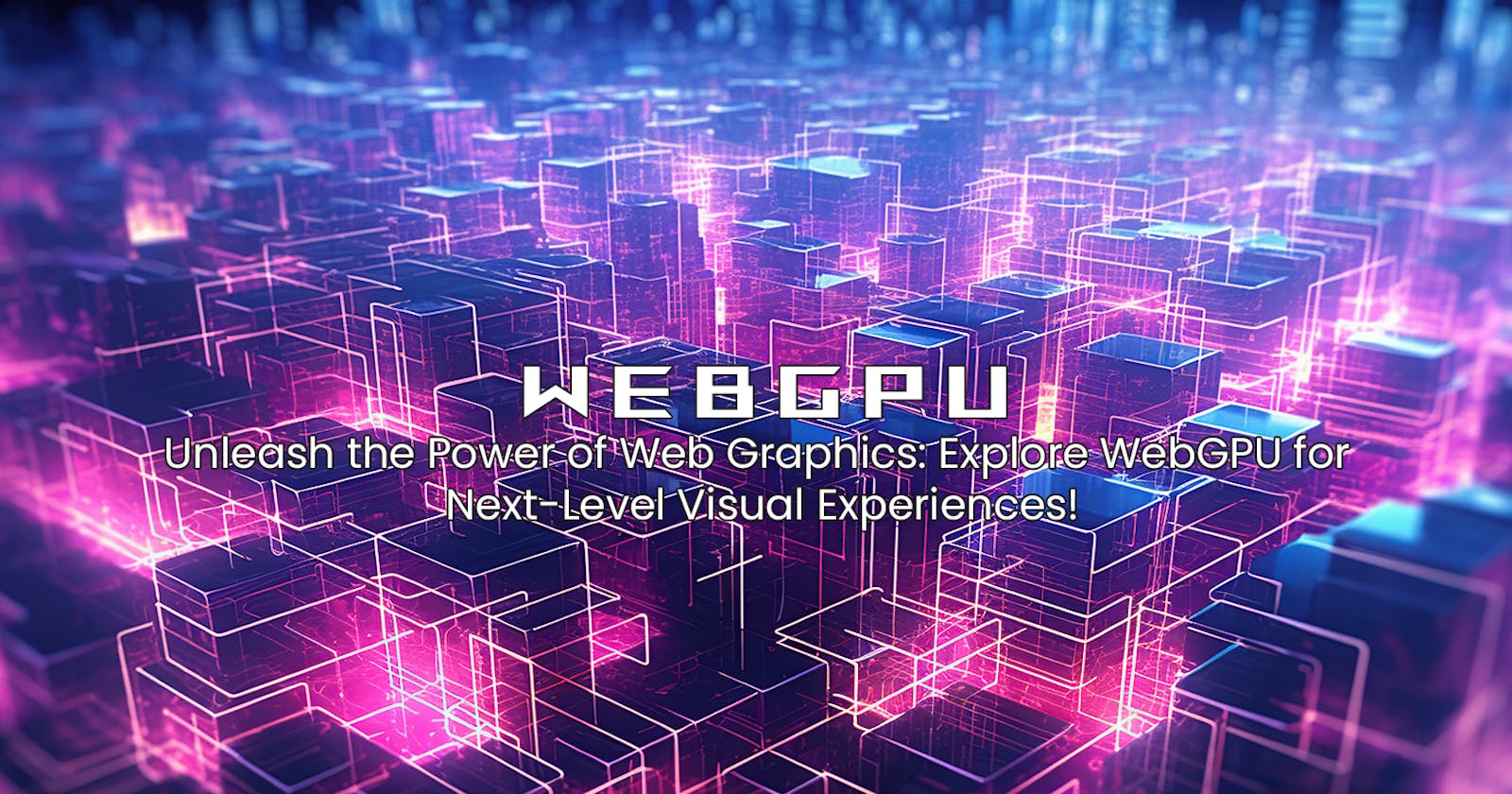Unveiling the Future of Graphics with WebGPU🚀
Unlocking the Potential: A Journey into WebGPU for Cutting-Edge Web Graphics
In an ever-evolving web development landscape, it’s important to stay ahead of the curve. As technology advances, so do the possibilities for creating beautiful and immersive online experiences. One such development that promises to revolutionize web graphics is WebGPU.
What is WebGPU?
WebGPU is an emerging internet wellknown designed to provide a contemporary, low-level portraits API for the web. Spearheaded by using the GPU for the Web Community Group, which includes predominant tech players like Apple, Google, Mozilla, and Microsoft, WebGPU targets to free up the whole potential of cutting-edge portraits hardware in internet browsers.
At its core, WebGPU is constructed upon the foundations of Vulkan, Metal, and Direct3D 12, bringing excessive-overall performance, specific photos and compute abilities to the web platform. By providing a decrease-degree interface than its predecessor, WebGL, WebGPU empowers builders with more manage over the GPU, permitting them to squeeze out each ounce of overall performance for his or her programs.
Key Features of WebGPU
Performance
WebGPU is designed with performance in mind. By optimizing the power of today’s GPUs, it enables developers to create graphics-intensive applications that perform well on a wide range of devices from desktops to mobile phones
Modern API
Unlike WebGL, that's based totally on OpenGL ES, an getting old popular, WebGPU embraces the modern improvements in snap shots generation. Its modern-day API is more intuitive and less difficult to apply, whilst also presenting higher performance and scalability.
Cross-Platform Support
WebGPU is designed to be cross-platform, which means it works seamlessly across different operating systems and devices. Whether you’re aiming for a desktop, laptop, tablet, or smartphone, WebGPU ensures a consistent and quality graphics experience for all users.
Extensibility
WebGPU is designed to be extensible, allowing developers to create custom shaders and effects according to their specific needs. Whether you’re building 3D games, virtual reality experiences, or data visualization tools, WebGPU delivers the flexibility and power you need to bring your vision to life
Use Cases for WebGPU
Gaming
With its high-performance graphics, WebGPU is poised to revolutionize web-based gaming. Whether you’re developing casual HTML5 gaming or a AAA-quality multiplayer experience, WebGPU enables you to create incredible, visually stunning worlds that take place directly in the browser
Virtual Reality
WebGPU's low-stage get admission to to the GPU makes it a super desire for constructing internet-based virtual fact experiences. By harnessing the power of WebGL, WebXR, and different net standards, builders can create immersive VR environments that customers can explore the use of their computing device or cell browser.
Data Visualization
WebGPU isn’t just for games and entertainment—it’s also a powerful tool for data visualization. Whether you’re visualizing complex scientific data, economic data, or geography, WebGPU enables interactive, high-performance visualizations that run directly in the browser
Getting Started with WebGPU
Setup
First, let's set up our HTML file with a canvas element where we'll render our graphics:

<canvas id="webgpu-canvas"></canvas>
Ready to dive into the world of WebGPU? Here's how to get started:
Check Browser Support: While WebGPU is still in development, there is testing support in browsers like Chrome, Firefox, and Safari. Be sure to check out the latest wedding trends before diving in..
Explore Tutorials and Documentation: There are many online resources to help you learn WebGPU, including tutorials, guides, and documentation. Use these resources to familiarize yourself with APIs and best practices.
Experiment and Iterate: The best way to learn WebGPU is by doing. Start small with simple tasks, and gradually work your way up to complex applications. Don’t be afraid to experiment and iterate as you go—you’ll learn a lot along the way.
Join the Community: Finally, don’t forget to join the WebGPU community! Whether it’s through forums, mailing lists, or social media channels, connecting with other developers is a great way to learn from others, get help when needed, and stay up to date with the latest developments
Next, we'll initialize the WebGPU context and configure it to use the appropriate device and format:
// Creating a Canvas element so that we can use it further
const canvas = document.getElementById('webgpu-canvas');
Initializing WebGPU
We'll request an adapter and a device to initialize our WebGPU context:
const adapterPromise = navigator.gpu.requestAdapter();
const contextPromise = adapterPromise.then((adapter) => adapter.requestDevice());
let device, context;
(async function init() {
device = await contextPromise;
context = canvas.getContext('webgpu');
context.configure({
device: device,
format: 'bgra8unorm'
});
})();
This sets up the canvas and initializes the WebGPU context with the appropriate adapter and device.
Shader Code
Next, we define the vertex and fragment shaders that will be used to render our triangle:
// Shader
const vertexShaderCode = `
// You can write you Vertex Shader
`;
const fragmentShaderCode = `
// You can write your Fragment Shader
`;
These shaders define how the vertices and fragments of our triangle will be processed and colored.
Compiling Shaders
We compile our shaders into modules that can be used by the WebGPU pipeline:
// Compile shaders
const vertexModule = device.createShaderModule({ code: vertexShaderCode });
const fragmentModule = device.createShaderModule({ code: fragmentShaderCode });
This step prepares our shaders for use in rendering.
Vertex Data
Now, let's define the vertices of our triangle and create a buffer to hold this data:
// Vertex data
const vertices = new Float32Array([
// position // color
0.0, 0.5, 0.0, 1.0, 0.0, 0.0, 1.0, // Top
-0.5, -0.5, 0.0, 0.0, 1.0, 0.0, 1.0, // Bottom Left
0.5, -0.5, 0.0, 0.0, 0.0, 1.0, 1.0 // Bottom Right
]);
// Create vertex buffer
const vertexBuffer = device.createBuffer({
size: vertices.byteLength,
usage: GPUBufferUsage.VERTEX,
mappedAtCreation: true
});
new Float32Array(vertexBuffer.getMappedRange()).set(vertices);
vertexBuffer.unmap();
Here, we define the positions and colors of each vertex of our triangle, and create a buffer to store this data.
The Future of Web Graphics
As the WebGPU matures and gains acceptance, we may see a new era of web graphics emerge. From stunning gameplay to immersive VR experiences to powerful data visualizations, the possibilities are endless. By adopting WebGPU, developers can unlock the full potential of the web as a platform for rich, interactive content. So what are you waiting for? Dive in today and start building the future of web graphics!

